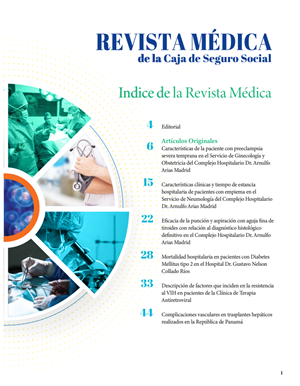INFOXICATION IN HEALTH
Main Article Content
Abstract
The term infoxication arises from the union of the words information and intoxication. It was created by Alfons Cornella, in 1996, to describe the di culty in processing the large amount of data that we are affected through the internet.
The English term for infoxication is information overload proposed by Alvin To er and defines it with the excess of information that results in the Information Fatigue Syndrome.
Informative Fatigue syndrome was described by David Lewis and defines it as a symptomatic picture, product of informational overload, described by fatigue and tiredness, accompanied by anxiety, stress, sleep disorders, loss of vision, attention and concentration problems, Di culty analyzing and making decisions.
Faced with the wide variety of online information resources, R. B. Haynes proposed a pyramid model, which shows through a hierarchical structure, the different levels at which sources based on scientific evidence are organized.
Downloads
Article Details
Issue
Section

This work is licensed under a Creative Commons Attribution-NonCommercial 4.0 International License.
How to Cite
References
1. Caccuri, V. (2013). Educación con TICS. USERSHOP.
2. Cornella, A. (2002). La gestión inteligente de la información en las organizaciones. Barcelona: Gestión.
3. Navas-Martin, M. Á., Albornos-Munoz, L., & Escandell-García, C. (2012). Acceso a fuentes de información sobre salud en España: cómo combatir la infoxicación. Enfermería Clínica, 22(3), 154-158.
4. Pérez, O. N. G. R. “Infoxicacion” en las Ciencias Medicas.
5. To er, A. (1980). La Tercera Ola, Barcelona, Plaza & Janes. SA. Editores.
6. Scimago Journal & Country Rank. 2017 [citado: 9 de noviembre de 2017. Disponible en: http:// www.scimagojr. com/countryrank. php? region= Latin% 20 America
7. Navas-Martin, M. Á., Albornos-Munoz, L., & Escandell-García, C. (2012). Acceso a fuentes de información sobre salud en España: cómo combatir la infoxicación. Enfermería Clínica, 22(3), 154-158.
8. Haynes, R. B. (2005). Of studies, summaries, synopses, and systems: the “4S” evolution of services for finding current best evidence. Evidence-based nursing, 8(1), 4-6.
9. Haynes, R. B. (2006). Of studies, syntheses, synopses, summaries, and systems: the “5S” evolution of information
services for evidence-based healthcare decisions. BMJ Evidence-Based Medicine, 11(6), 162-164.
10. DiCenso, A., Bayley, L., & Haynes, R. B. (2009). Accessing pre-appraised evidence: fine-tuning the 5S model into a 6S model.
11. Muñoz, I., & Salas, M. (2011). Cómo buscar (y encontrar) evidencia científica en salud: el planteamiento de la búsqueda. Nure Investigación [Internet], 55.
12. Villar, C. G. (2011). Radiología basada en la evidencia en el diagnóstico por imagen:¿ qué es y cómo se practica?. Radiologia, 53(4), 326-334.
13. Codina, L. (2005). Scopus: el mayor navegador científico de la web. El profesional de la información, 14(1), 44-49.
14. Espinoza, N., Rincón, Á. G., & Chacín, B. (2006). Búsqueda de información en la Web por profesionales de salud en una universidad venezolana. Un estudio transversal. El profesional de la información, 15(1), 28-33.
15. Estrada-Lorenzo, J. M., Barderas-Manchado, A., Fuentelsaz-Gallego, C., González-María, E., & Moreno-Casbas, T. (2009). Recursos sobre envejecimiento y salud en Internet. Enfermería Clínica, 19(4), 215-220.

